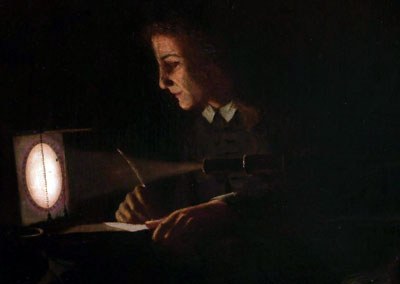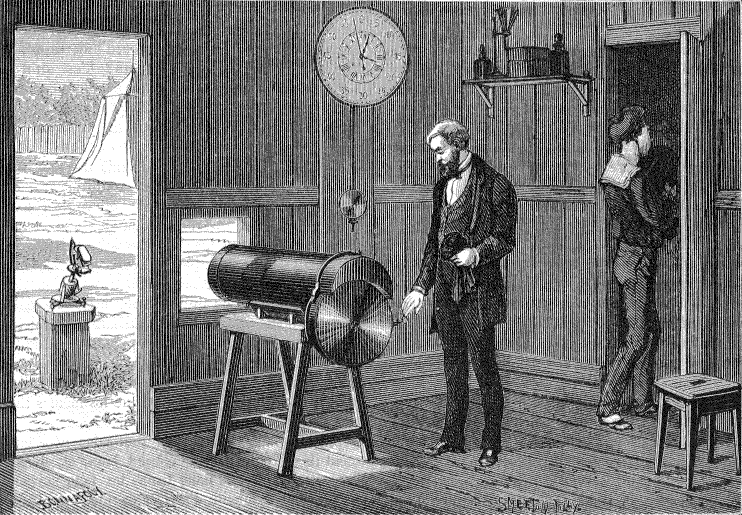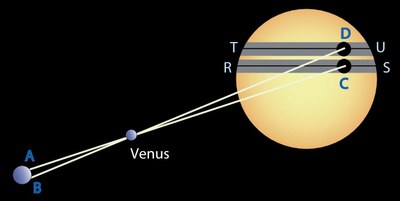History of the observations of the transits
This phenomenon may have been observed to the naked eye before the invention of the telescope but we are not really sure.
The first known observation was done in December 1639 by the young Horrocks. To do so, he projects the picture of the Sun with Galileo’s telescope.
 |
The transit of 1639 observed by Horrocks J. W. Lavender Astley Hall Museum and Art Gallery Chorley |
A few decades later, Edmund Halley the man who gave his name to the comet describes a method enabling the calculation of the distance of the Sun by measuring the duration of the transit from several distant points of the Earth (see figure). At that time, this distance is not very well known.
Halley’s method
If we observe a transit of the planet Venus from two distant points of the Earth A and B, we will see it follow two different chords on the solar disc. If we measure the duration of the transit seen from A and then from B, we will therefore get two different results. The difference between these two time measurements will enable us to calculate the angular distance between C and D, in minutes of arc for instance.
On the other hand, we know the plane of the solar system thanks to the observation of the movement of the planets or to Kepler’s third law. For instance, we know that the distance Venus-Sun equals 0.72 times the distance Earth-Sun. The distance AB in km between the two observers is known. The plane of the solar system enables the calculation of CD in km.
Knowing CD in km and in minutes of arc, we can deduce the distance from the Earth to the Sun.
In June 1761, Venus passes in front of the Sun. Halley can’t observe it as he died twenty years before, however numerous teams of astronomers spread around the globe try to implement his method. The results are disappointing as the instant of contacts is difficult to determine precisely.
At every following transit, in 1769, 1874 and 1882, numerous expeditions attempt to improve the measurement of the distance from the Sun. So as to better determine the time of the beginning and the end of the passage, the French astronomer Janssen uses in 1874 a photographic revolver made for the occasion.
 |
Janssen’s photographic revolver, put up behind a telescope, for oberving the transit of Venus from Japan in 1874. Conservatoire national des arts et métiers |
There is no transit of Venus in the 20th century. But other methods enable us to know more precisely the distance to the Sun, thanks to parallax measurements on asteroid Eros, then to radar shootings on Mars and finally with the space probes.
The first transit of the 21st century occurred on June 8, 2004. It had little scientific interest for the professional observers. But it was observed by a large audience and by amateur astronomers.
The operation VT2044 with the IMCCE enables us to measure the distance to the Sun with numerous observation results but the method of calculation is complex.
The Comité de Liaison Enseignants et Astronomes measured the distance to the Sun less precisely but with a simple method using two pictures of the phenomenon: one taken from Réunion Island in the Indian Ocean and the other from France. This method can be used by the pupils.
Document Actions


